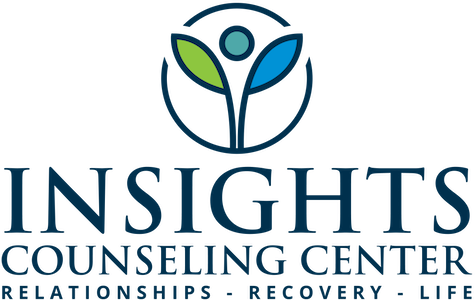When Anger Becomes the Foundation: The Betrayal Pyramid
When betrayal crashes into a relationship, it doesn’t just hurt—it rearranges everything. The stories couples tell about themselves, the way they reach for each other, and the foundation they thought they were standing on can all shift in an instant. In the aftermath, many partners find themselves asking: “What are we standing on now?”
At Insights Counseling Center, we often use two companion tools when working with couples facing betrayal. The Intimacy Pyramid, originally created by Dan Drake, Joanna Raabsmith, and Matthew Raabsmith, offers a framework for what healthy connection looks like after betrayal: truth, safety, trust, vulnerability, and intimacy. As we began helping couples rebuild those layers, we also needed a way to name what had taken their place. That’s why we created The Betrayal Pyramid—a visual metaphor we often use in couples sessions to help explain what is happening for the betrayed partner. At the base of that pyramid is something many couples know all too well: anger. It’s a way to understand the emotional architecture that replaces intimacy when trust is broken.
When Anger Replaces Truth
In a healthy relationship, truth forms the foundation. Even when it’s uncomfortable, honesty creates clarity, direction, and—eventually—repair. But after betrayal, especially when full truth is missing or delayed, anger often rushes in to take its place. And for good reason.
Anger after betrayal isn’t inherently bad. In fact, it can be an empowering emotion—one that wakes us up to needs that were ignored, dismissed, or silenced. Anger can help betrayed partners find their voice and clarify what matters most. But over time, if it becomes the emotional home we live in, it can harden into a cycle that repeats itself—reactivity, distance, regret, shutdown. It stops being a response and becomes a rhythm.
That’s why both individual and relational work matter. Without intentional healing, we risk living in the ruins of betrayal far longer than necessary. Anger may be part of the journey, but it doesn’t have to be the destination.
From Safety to Fear
Once truth is cracked or shattered, betrayed partners don’t feel safe—they feel fear. And that fear only deepens when lies, half-truths, staggered disclosures, or emotional evasions continue. This is not just fear of more betrayal.
It becomes fear of manipulation. Fear of being made to feel “crazy” for asking questions. Fear of being blamed for the pain. Fear of never knowing if you're being told the full story.
When safety is gone, everything becomes a threat. Conversations feel like landmines. Silence feels like abandonment. Even comfort can feel suspicious. The nervous system begins to live on edge—and fear becomes the norm.
From Trust to Mistrust
If safety gives way to fear, then trust erodes into mistrust. This isn’t just about the betrayed partner doubting the betrayer. It’s also about doubting themselves: Was I blind? Can I trust my gut anymore? Was I enough?
Mistrust doesn’t live quietly. It seeps into every interaction, second-guessing motives and intentions. Without trust, even good efforts can be met with suspicion. A kind gesture might feel like a cover-up. An apology might sound rehearsed. Mistrust builds walls where connection used to live.
From Vulnerability to Vigilance
Vulnerability is what allows intimacy to flourish. It’s the soft underbelly of closeness—the willingness to be seen and known. But when you’ve been hurt, especially by someone you let in deeply, vulnerability becomes dangerous.
In its place rises vigilance. Eyes always scanning. Heart always guarded. Words calculated for self-protection rather than openness. Vigilance might look like strength, but it’s born from fear. It’s the body and mind saying, “Never again.”
And over time, it’s exhausting. Constantly assessing for danger, reading between the lines, anticipating disappointment—it takes a toll. Vigilance becomes not just a coping mechanism, but a way of life that slowly wears down hope, connection, and the ability to rest in love.
From Longing for Intimacy to Living in Isolation
This is the tragic end of the pyramid: isolation. Not because partners stop caring, but because the very things they once relied on—honesty, safety, trust, vulnerability—have been replaced. Intimacy becomes too risky. Emotional nakedness feels unsafe. So instead of moving toward each other, they drift apart. Sometimes physically. Sometimes emotionally. Sometimes both.
But the isolation doesn’t stop there. For many betrayed partners, the loneliness spills into other areas of life too. It’s the weight of a secret they didn’t choose. The ache of sitting in a small group or coffee shop while everyone else talks about their week, and you're silently carrying the shock, grief, or confusion of betrayal. Most people have no idea what you’re holding together—or how much energy it takes just to show up.
You may feel emotionally exiled, not just from your partner, but from friends, family, even your own sense of self. The pain becomes invisible to others, but constantly present for you. This kind of isolation can feel suffocating—and it often deepens the very pain you're trying to survive.
You Don’t Have to Do This Alone
If you see yourself in this pyramid—if anger, fear, and vigilance feel more familiar than trust, safety, and closeness—you are not alone. Healing is possible, and there is a path forward. The Intimacy Pyramid, created by Dan Drake, Joanna Raabsmith, and Matthew Raabsmith, is a powerful guide for rebuilding connection after betrayal. It offers a vision of what can be restored: truth, safety, trust, vulnerability, and intimacy.
At Insights Counseling Center, we walk alongside individuals, couples, and families through every stage of that healing journey—whether you're working to restore your relationship with the one who betrayed you, or needing to heal in other relationships impacted by the ripple effects of betrayal. We hold to the drumbeat of APSATS training: Relational damage requires relational healing. You don’t have to carry this pain alone. At Insights Counseling Center, we’re here to help you take the next step toward the healing you deserve.

